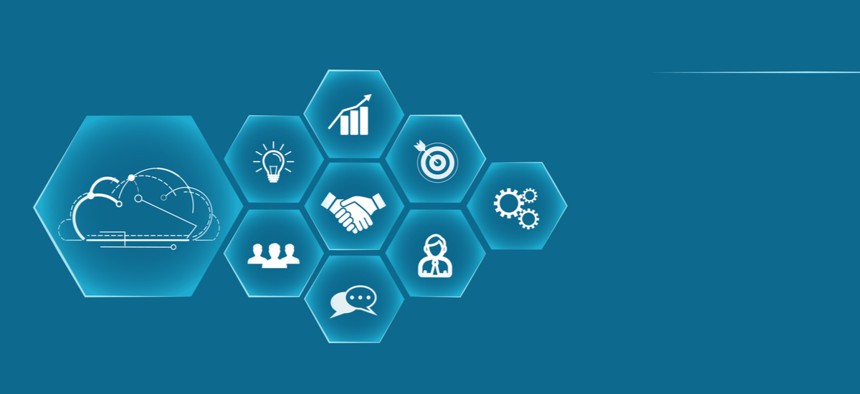The Logical Next Step in the Technical Evolution

Piusillu/Shutterstock.com
Military services are already embracing IT as a service. Will civilian agencies follow suit?
Nearly anyone who has worked in government has felt the impact of disjointed information technology programs and the piecemeal approach by which agencies modernize, leading to stovepipes and little return on investment.
While making digital transformation a priority, the government’s access to the next big thing has been just a contract away. First, there was software as a service, and then cloud, followed by platform as a service and infrastructure as a service. Next came anything as a service, or XaaS, which allows agencies to buy IT services on demand, but doesn’t integrate the disparate services or equipment.
The result too often is a complicated mashup of multiple vendors and government staff trying to integrate modern systems and emerging technologies with legacy infrastructure. Federal leaders rightly complain that IT has become a costly and unwieldy management burden. The challenge is growing as agencies struggle to recruit in IT while facing the requirement to reduce budgets and staff.
In comes Enterprise IT as a Service
Defense Department acquisitions seemingly captured this frustration in their 2017 Joint Enterprise Defense Infrastructure, or JEDI, cloud solicitation, which put the focus more on information—data—and less on technology. “The department’s lack of a coordinated enterprise-level approach to cloud infrastructure makes it virtually impossible for our warfighters and leaders to make critical data-driven decisions at mission speed,” it read.
The Air Force was the first to contract enterprise IT with its request for proposal last year for “Enterprise IT-as-a-Service (EITaaS).” Under EITaaS, the service would contract all of its commodity IT needs to free up time, money and talent for its more specialized, mission-critical needs. The Air Force double-downed on the service in February, awarding a contract to expand those pilots to up to 20 bases. The EITaaS covers IT service management, enterprise service desk, and end-user device management for up to three years. In announcing the award, Bill Marion, deputy Air Force CIO, said the contract frees government staff to work on core competencies and will improve IT services.
Now that the Air Force has proven case studies for IT-as-a-Service, others are likely to follow. The Army already has taken steps toward ITaaS, and several civilian agencies are considering the possibilities. Contracting in an enterprisewide IT way leverages industry solutions and supports innovation, as well as a robust and flexible environment to more easily adapt services as requirements change. Moreover, it provides the cohesion to mitigate the likelihood of stovepipes.
A change of thinking is in order
While the military services may be taking the lead on EITaaS, the potential for it in civilian government is equally strong. Imagine the difference if agencies could free up resources and shift their focus from IT to their core missions: The Federal Aviation Administration could focus on air traffic; the Food and Drug Administration on safety; the FBI on criminal investigations; NASA on space exploration; and the military on warfighting. The list goes on and on.
Agencies considering the shift to contracting by an enterprise IT approach can benefit from a change in thinking about IT in terms of hardware and software, to the types of services they need. Rather than buy IT products piecemeal, EITaaS allows agencies to buy IT services, passing the infrastructure planning and maintenance to vendors. The result is more industry innovation and agency flexibility.
Federal agencies are under increasing, simultaneous demands to modernize technology, work more efficiently, justify budgets, reduce staff and remain mission-focused. Now is the time for leaders to ask, “What does my agency need from IT?” Is the answer in the data – information in real-time and the ability to make the best use of it? Or does it need to manage all the technical infrastructure that comes with it?
As agencies modernize, they have the opportunity to more broadly adopt an “as-a-service” approach to IT. Making the change enterprise-wide would distinguish it from the “anything-as-a-service” approach.
EITaaS is the next step in the technical evolution of IT. It’s a cohesive strategy for managing the disparate pieces. Put more directly, it’s time for IT to go the way of utilities. Just as agencies don’t keep their plumbing or electrical work in-house, it’s time to remove the distraction of IT away from the mission-critical tasks at hand.
Bryan Thomas is senior vice president of public sector for World Wide Technology.
NEXT STORY: The Citizen is Always Right





